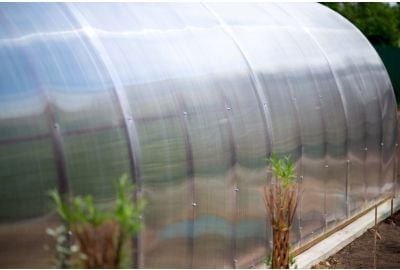8 Cannabis Companion Plants to Help Your Garden Thrive
Protecting it from critters, camouflaging crops, nurturing soil life — cannabis companion plants turn your gardening project from good to excellent.
Growing weed is a game with many moving pieces. You have to worry about the smell, look, soil, nutrition, light, trimming, pests… The list seems endless. Planting other herbs alongside marijuana can’t solve all your problems, but it makes things much more straightforward.
Join us as we explore this nifty hack. We’ll also share the best companion plants for cannabis, together with some handy growing tips.
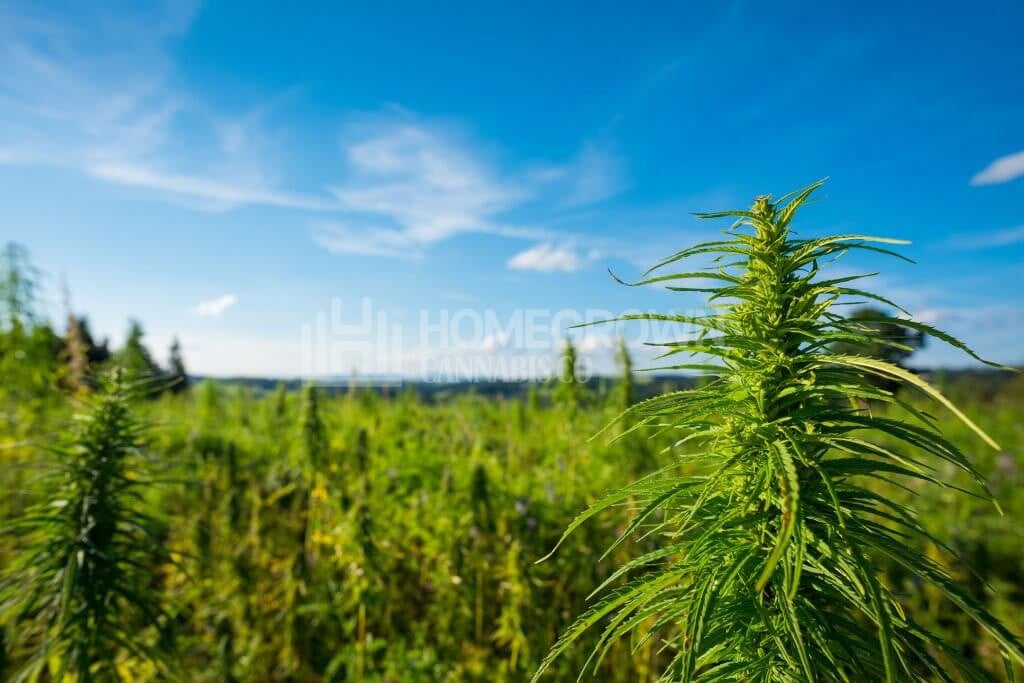
What is companion planting?
You’ve seen the term in every how to grow cannabis outdoors guide. Companion plants for cannabis are a topic worth looking into, no matter the specifics of your cultivation project.
As a concept, companion planting for marijuana is pretty easy to understand. Crops in the open grow next to other natural life. Evolution leads to the development of symbiotic relationships. Years pass, and we see that plants grow better when surrounded by vegetative friends.
Companion planting for cannabis involves growing helpful plants close to your weed crops. Other species bring various benefits to the table, ultimately boosting health and harvest quality.
This horticultural method is nothing new, nor is it weed-only. Native Americans practiced it with corn, squash, and beans. Modern growers can do the same with cannabis and various other herbs.
There’s a whole range of species available as companions. So, how do you find the right one? The choice revolves around your crops’ needs and issues. For instance, basil repels aphids, but red clovers are better for soil quality.
As a rule, think about hurdles you might face and choose accordingly.
The selection also depends on the best place to grow weed for you. Secure fields aren’t always accessible, so growers settle for balconies, backyards, and rooftops. In this case, cannabis companion plants act as more than pest deterrents—they’re a security matter.
Before discussing individual companion plants for weed, let’s explore the purposes they serve.
Benefits of companion planting for cannabis
Companion planting for marijuana can transform a simple garden into a complex, self-improving ecosystem. It leaves the space healthy and independent of artificial influences.
How can some small herbs make this happen?
They deliver an immense natural advantage, and it’s five-fold.
Biodiversity
For one, growing more plants naturally increases the biodiversity of your garden. Mixed plant life creates a suitable environment for flourishing crops, promoting soil quality and microbial diversity.
It’s not all ground-level, either. Cannabis companion plants attract wildlife and pollinators, sustaining themselves while keeping potential threats away from your weed.
Finally, biodiversity reduces the rate of disease transmission. If you have many identical plants packed closely together, they’re all likely to contract the same pathogen. Companion plants for marijuana act as buffers against disease.
Overall protection
Cannabis pests despise the taste of flowers and aromatic herbs, emanating aromas that deter insects and other crawlers. Other cannabis companion plants have an opposite effect, being so tasty that nasties forget all about weed.
This benefit lets you move away from chemicals and towards eco-friendly practices.
Grow large enough plants, and they can protect from more than pests and disease. Big crops stand as barriers against harsh wind, rain, and prying eyes.
Security
Despite legalization, cannabis is still a stigmatized affair in the US.
Growing weed entails the potential for complaints, weird looks, and wandering hands taking a nip at your buds. Marijuana companion plants promote discretion, keeping you safe, secure, and out of trouble.
Plant flowers or veggies to have your weed hidden in plain sight. If the smell is an issue, aromatic herbs do wonders for keeping things under wraps.
Soil health
Healthy soil includes beneficial bacteria and fungi that support root development. These species help roots obtain nutrients and supply the soil with sugars.
Cannabis companion plants help you sustain these microbial colonies. For example, cover crops to prevent the sun from drying out the land. Other companions fix nitrogen availability, which further promotes vegetative growth.
In short, soil health is essential, and the healthiest soil is full of plant life.
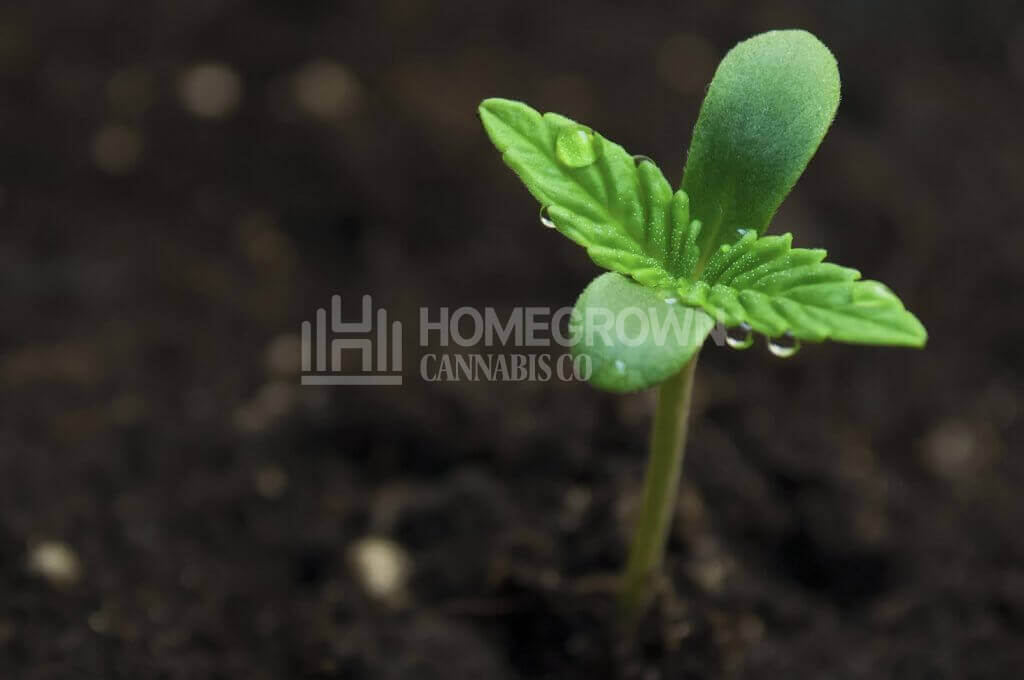
Food and medicine
Those four benefits are mostly universal. Apart from them, you get the unique perks of each herb you introduce.
Some companions are straight-up food, while others make for excellent tea or balm. Growing cannabis companion plants improves your harvests and doubles the fruits of your labor.
With that in mind, let’s discuss particular plants for this purpose.
Best cannabis companion plants
It’s time to talk specifics. What is the best cannabis companion plant?
Much like many other aspects of gardening, there’s no hard-and-fast answer to this question. Weed profits from symbiosis with hundreds of other plants, leaving it to your discretion what you choose to sow.
If you ask Homegrown, though, the following eight species pack the greatest punch. They encompass all five areas we discussed above, maximizing efficiency.
#1: Basil
- Improves bud flavor
- Masks cannabis smell
- Repels harmful insects
- Attracts beneficial insects
The ‘prince of plants’ serves as a wonderful cannabis companion plant. For one, its sweet scent is a fantastic facade for flowering weed colas.
It also repels aphids, mites, whiteflies, slugs, snails, and mosquitos. At the same time, the little green leaves attract pollinators for increased biodiversity.
The perks don’t end there, either. Your weed gets tastier with basil. Cultivators report increased terpene production and smoother, sweeter buds.
Tip: If you’re after the most flavorful yield possible, use dill and basil as marijuana companion plants.
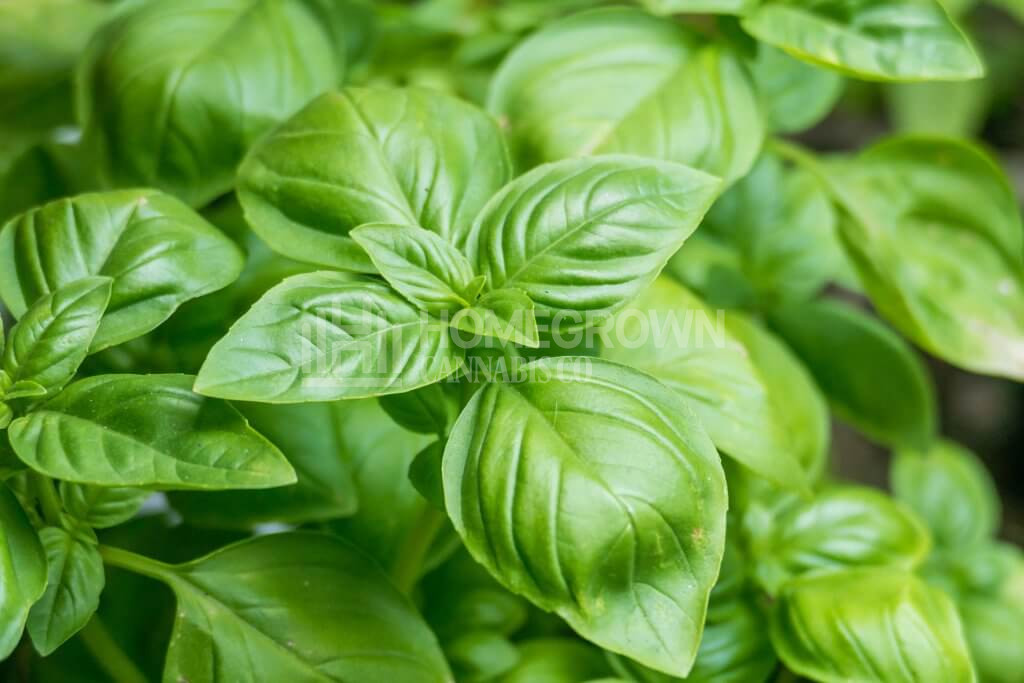
#2: Lavender
- Masks cannabis smells
- Attracts pollinators
- Repels fleas, mice, and ticks
Like basil, blooming lavender is a highly valuable cannabis companion plant. Its color and scent attract beneficial pollinators for natural diversity.
Many pests hate the smell of lavender. You don’t have to use chemical sprays to deter ticks, moths, mice, or fleas with some violet flowers in your garden.
Lavender is also useful for indoor companion planting. It replaces a carbon filter for those tell-tale cannabis scents filling the grow room.
Tip: As the summer ends, trim the lavender heads to make soothing tea or balm infusions.
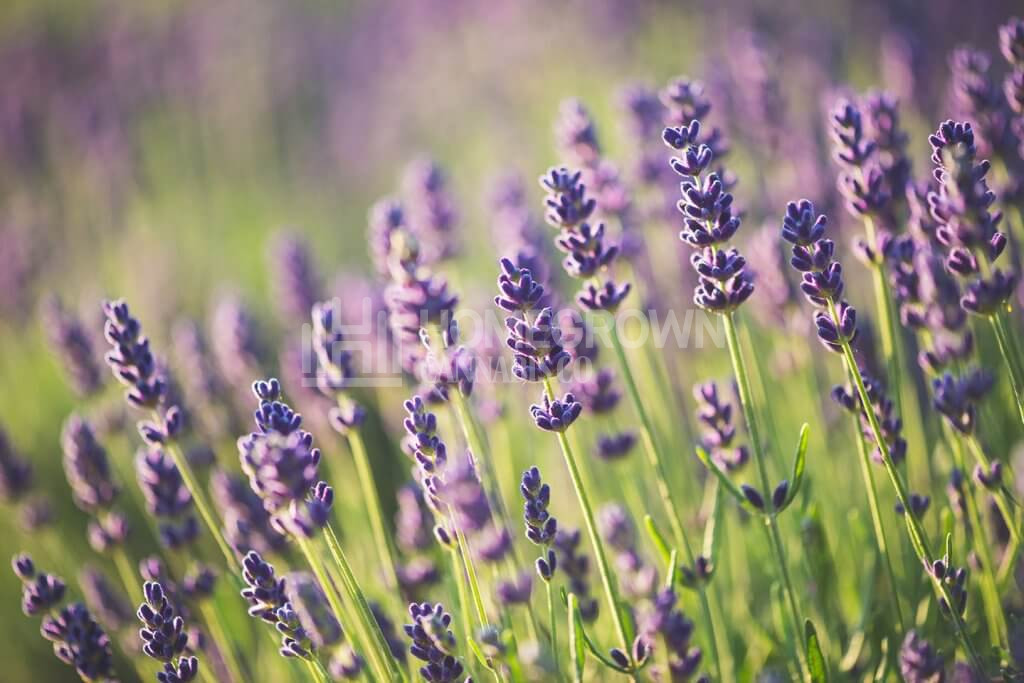
#3: Marigold
- Visually hides cannabis
- Keeps away pests
- Repels insects
A look at the gorgeous golden flowers already tells you why marigolds work as cannabis companion plants. Nobody would even notice your blooming White Widow next to their beauty.
Many insects, including moths and whiteflies, can’t stand these florets. On the other hand, aphids and wasps thrive on them, steering clear of your buds.
Marigolds have another perk, and it spans garden-wide. Their roots produce insecticide, which enters the soil and spreads to other plants. Before you know it, creepy crawlers stay far away from your entire growing patch.
Tip: Plant marigolds between cannabis plants to optimize visual and insecticide coverage.
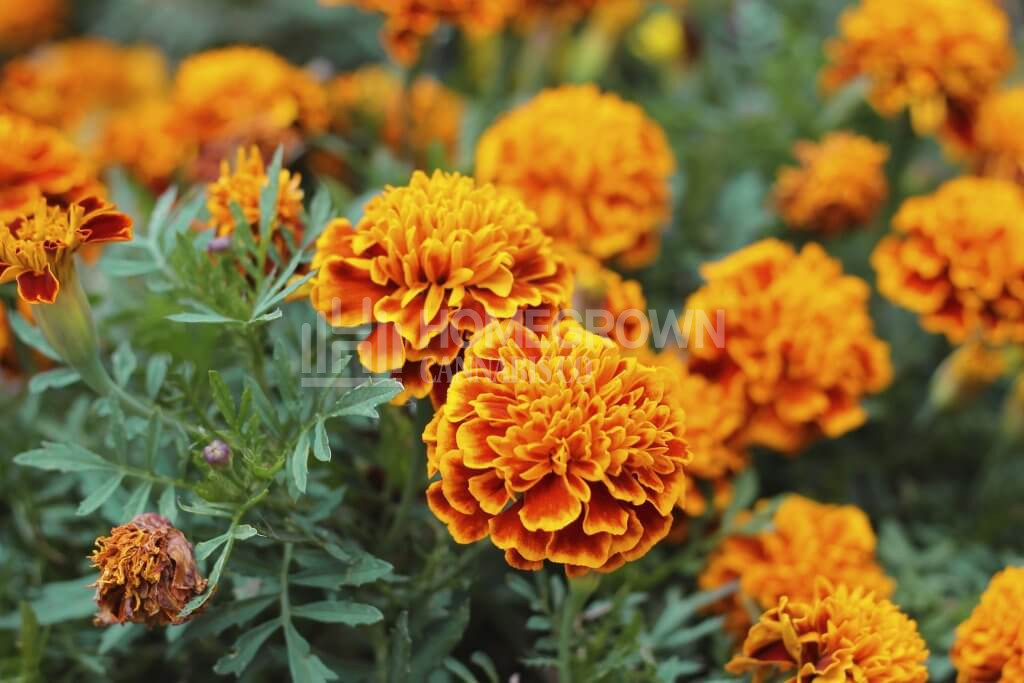
#4: Chamomile
- Prevents fungus infections
- Supplies potassium and calcium
- Deters mosquitos and flies
- Returns annually
Chamomile is an amazing companion plant for weed in outdoor environments. For one, it repels whiteflies and mosquitoes. It also attracts hoverflies, which eradicate harmful insects.
The chemicals from chamomile can prevent fungal infections in seedlings and vegging plants. As it decomposes and turns to mulch, the flowers release yummy nutrients to the soil.
The help lasts for over a year with these flowers, as chamomile blossoms annually. It’ll spring up again each year, setting you up with a regular cannabis companion plant.
Tip: Plant a chamomile border around your marijuana for optimal insect blockage.
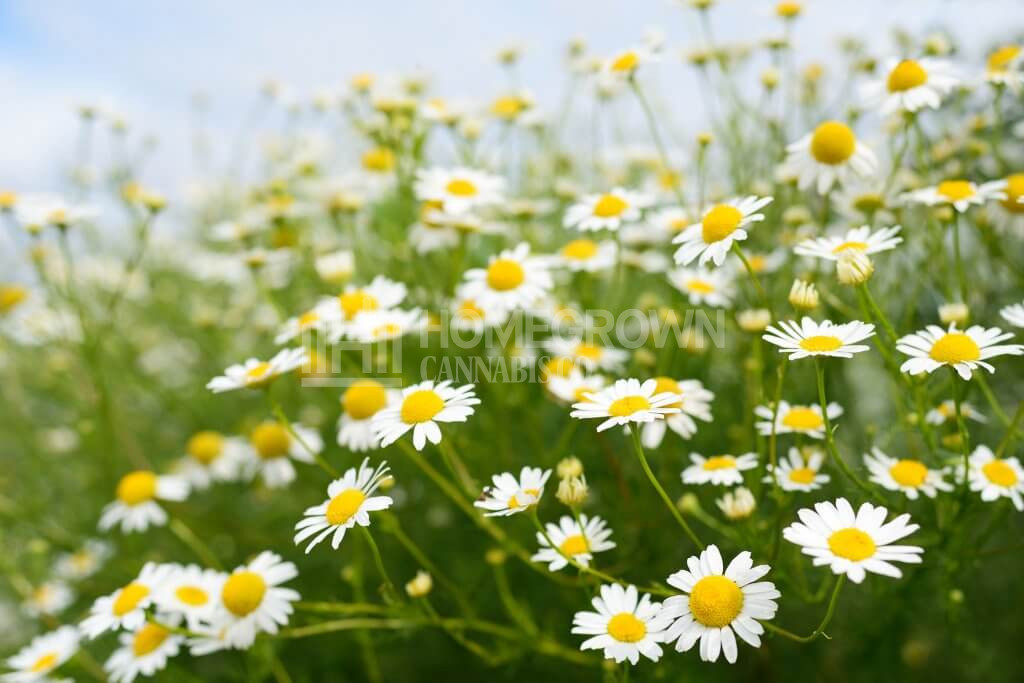
#5: Lemon balm
- Turns away pests
- Disguises cannabis smell
- Improves cannabis flavors
- Returns annually
We can’t discuss companion plants for indoor growing without mentioning lemon balm. These therapeutic herbs are amazing on their own, and the benefits double when you keep them next to budding weed.
The powerful scents of this herb disguise the aroma of flowering buds. Growers say that the citrusy smell could even carry over to your smokable flowers.
The citrus smell also repels gnats and mosquitoes, especially as it enters full bloom. The leaves dry and fall in October, only to return next year.
Tip: Keep lemon balm in pots. Otherwise, it might over-spread and leave very little room for a new weed growing season.
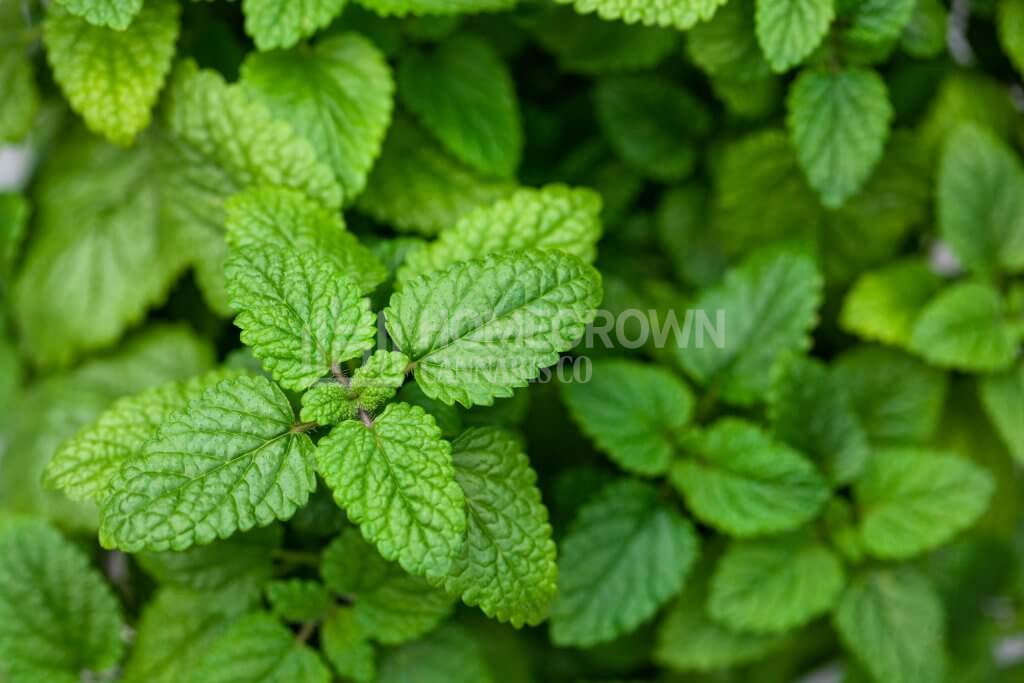
#6: Sunflowers
- Disguises crops
- Provides weather protection
- Deters insects
- Improves soil drainage
Sunflowers are the perfect way to use marijuana companion plants as physical shields for your baby weed. These beauties grow to 9 feet tall, protecting crops from wind, prying eyes, and unwanted shrubs.
These beautiful flowers attract beneficial buds that have spider mites for breakfast. Aphids, slugs, and whiteflies find it much more interesting than cannabis.
Sunflowers improve soil, too. Water drainage is no match to their powerful root networks.
Tip: Plant your sunflowers around the garden edge or each cannabis plant. Leave around 2 feet of space between the two species.

#7: Clovers
- Increase nitrogen supply
- Improve soil drainage
- Attract bees and butterflies
- Visually hide cannabis
Even if you have the best soil for growing marijuana, nitrogen availability can be an issue. That’s where clovers enter the picture.
Clovers drag nitrogen from the deeper parts of the soil, increasing availability for vegging weed. They also capture the nutrient from the air, storing supplies in their roots. As a result, decaying leaves a fresh source of nitrogen-rich mulch in the soil.
What’s more, the extensive root system aerates the dirt and improves drainage. Water, air, and nutrient flow become easier after the clovers break apart the texture.
Colorful clover heads attract butterflies, bees, and the human eye. You get additional biodiversity and discretion, all with one cannabis companion plant.
Tip: Clover multiplies rapidly, but you shouldn’t kill it. Allow the leaves to mulch to preemptively treat next year’s soil.

#8: Peppermint
- Repels most pests
- Masks cannabis smells
- Improves bud flavor
Like other aromatic marijuana companion plants, peppermint primarily brings scent-based benefits. The powerful aroma keeps cultivation hidden from nosy noses. Some of the minty essence might translate into the flavor of your buds.
The tasty minty flowers repel aphids, ants, roaches, and mice. It attracts butterflies and other pollinators, though, helping with biodiversity.
Peppermint works best for indoor companion planting, where you reap the benefits without running the risk of its invasive nature.
Tip: Peppermint is a fantastic medicinal companion, but only if you can manage its tricky nature. Plant in isolated pots to control its spread.
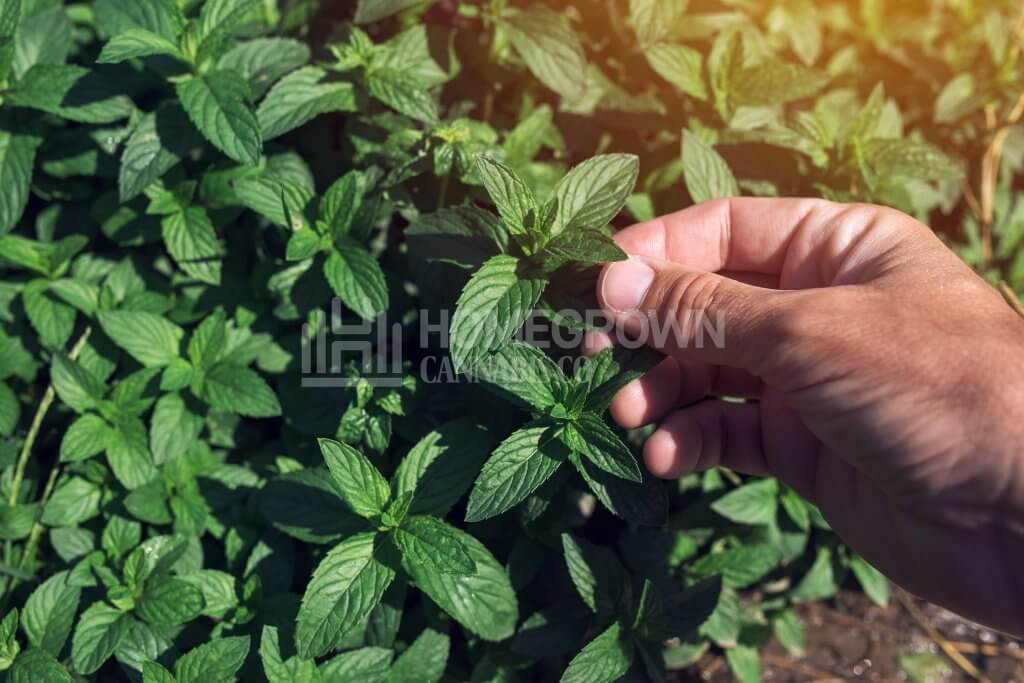
Honorable mentions
Remember when we said there are hundreds of cannabis companion plants at your disposal? That still holds.
Instead of making a hundred-item list, we’ll mention excellent plants to grow with cannabis that didn’t make it to the final lineup:
- Comfrey prevents powdery mildew and pulls nutrients
- Sweet peas stop unwanted weeds and make excellent mulch
- Alfalfa is an insect repellant that also increases nitrogen contents
- Borage supplies the soil with vitamins and minerals
- Thyme promotes biodiversity and shelters against fungi
In a nutshell, most herbs help weed thrive. Use our list as a starting point, but conduct further research if you’re not finding the ideal option here.

Herbs helping herbs
Our main takeaway is simple. Looking for a way to avert pests without artificial repellents? Use cannabis companion plants. Need to make your plants discreet? Use cannabis companion plants.
Looking for a way to cultivate holistically? Use. Companion. Plants.
Sow one of the species we mentioned and see the perks in practice. Build a self-sustainable ecosystem and take your eco-friendly cultivation journey to a completely new level.
Check our article about marijuana lookalikes and stay tuned to our blog for more guides on stepping up your gardening game.
About the author: Parker Curtis
Parker Curtis has around a decade of cannabis-growing experience, specialising in soil-less and hydro grows. He’s mastering outdoor, greenhouse, and indoor grows.
